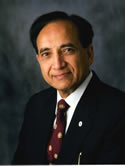Hypoxia-directed treatment of human papillomavirus-related oropharyngeal carcinoma Journal Article
| Authors: | Lee, N. Y.; Sherman, E. J.; Schöder, H.; Wray, R.; Boyle, J. O.; Singh, B.; Grkovski, M.; Paudyal, R.; Cunningham, L.; Zhang, Z.; Hatzoglou, V.; Katabi, N.; Diplas, B. H.; Han, J.; Imber, B. S.; Pham, K.; Yu, Y.; Zakeri, K.; McBride, S. M.; Kang, J. J.; Tsai, C. J.; Chen, L. C.; Gelblum, D. Y.; Shah, J. P.; Ganly, I.; Cohen, M. A.; Cracchiolo, J. R.; Morris, L. G. T.; Dunn, L. A.; Michel, L. S.; Fetten, J. V.; Kripani, A.; Pfister, D. G.; Ho, A. L.; Shukla-Dave, A.; Humm, J. L.; Powell, S. N.; Li, B. T.; Reis-Filho, J. S.; Diaz, L. A.; Wong, R. J.; Riaz, N. |
| Article Title: | Hypoxia-directed treatment of human papillomavirus-related oropharyngeal carcinoma |
| Abstract: | PURPOSEStandard curative-intent chemoradiotherapy for human papillomavirus (HPV)-related oropharyngeal carcinoma results in significant toxicity. Since hypoxic tumors are radioresistant, we posited that the aerobic state of a tumor could identify patients eligible for de-escalation of chemoradiotherapy while maintaining treatment efficacy.METHODSWe enrolled patients with HPV-related oropharyngeal carcinoma to receive de-escalated definitive chemoradiotherapy in a phase II study (ClinicalTrials.gov identifier: NCT03323463). Patients first underwent surgical removal of disease at their primary site, but not of gross disease in the neck. A baseline 18F-fluoromisonidazole positron emission tomography scan was used to measure tumor hypoxia and was repeated 1-2 weeks intratreatment. Patients with nonhypoxic tumors received 30 Gy (3 weeks) with chemotherapy, whereas those with hypoxic tumors received standard chemoradiotherapy to 70 Gy (7 weeks). The primary objective was achieving a 2-year locoregional control (LRC) of 95% with a 7% noninferiority margin.RESULTSOne hundred fifty-eight patients with T0-2/N1-N2c were enrolled, of which 152 patients were eligible for analyses. Of these, 128 patients met criteria for 30 Gy and 24 patients received 70 Gy. The 2-year LRC was 94.7% (95% CI, 89.8 to 97.7), meeting our primary objective. With a median follow-up time of 38.3 (range, 22.1-58.4) months, the 2-year progression-free survival (PFS) and overall survival (OS) rates were 94% and 100%, respectively, for the 30-Gy cohort. The 70-Gy cohort had similar 2-year PFS and OS rates at 96% and 96%, respectively. Acute grade 3-4 adverse events were more common in 70 Gy versus 30 Gy (58.3% v 32%; P =.02). Late grade 3-4 adverse events only occurred in the 70-Gy cohort, in which 4.5% complained of late dysphagia.CONCLUSIONTumor hypoxia is a promising approach to direct dosing of curative-intent chemoradiotherapy for HPV-related carcinomas with preserved efficacy and substantially reduced toxicity that requires further investigation. © American Society of Clinical Oncology. |
| Keywords: | clinical trial; phase 2 clinical trial; hypoxia; carcinoma; chemoradiotherapy; oropharyngeal neoplasms; wart virus; papillomavirus infections; complication; oropharynx tumor; papillomavirus infection; procedures; humans; human; human papillomavirus viruses |
| Journal Title: | Journal of Clinical Oncology |
| Volume: | 42 |
| Issue: | 8 |
| ISSN: | 0732-183X |
| Publisher: | American Society of Clinical Oncology |
| Date Published: | 2024-03-10 |
| Start Page: | 940 |
| End Page: | 950 |
| Language: | English |
| DOI: | 10.1200/jco.23.01308 |
| PUBMED: | 38241600 |
| PROVIDER: | scopus |
| PMCID: | PMC10927322 |
| DOI/URL: | |
| Notes: | Article -- MSK author Anuja Kriplani's last name is misspelled on the original publication -- Source: Scopus |
Altmetric
Citation Impact
BMJ Impact Analytics
MSK Authors
-
 434
434Zhang -
 337
337Powell -
 233
233Gelblum -
 148
148Boyle -
 244
244Singh -
 64
64Michel -
 350
350Sherman -
 423
423Riaz -
 896
896Lee -
 556
556Schoder -
 310
310Katabi -
 391
391Pfister -
 424
424Wong -
 285
285Morris -
 99
99Hatzoglou -
 439
439Humm -
 143
143Dave -
 246
246Ho -
 437
437Ganly -
 725
725Shah -
 32
32Kriplani -
 642
642Reis-Filho -
 66
66Grkovski -
 303
303McBride -
 17
17Han -
 143
143Dunn -
 103
103Cracchiolo -
 279
279Li -
 239
239Tsai -
 40
40Paudyal -
 227
227Imber -
 143
143Cohen -
 156
156Diaz -
 118
118Yu -
 51
51Kang -
 72
72Chen -
 30
30Fetten -
 86
86Zakeri -
 17
17Diplas -
 18
18Wray -
 1
1Pham
Related MSK Work




